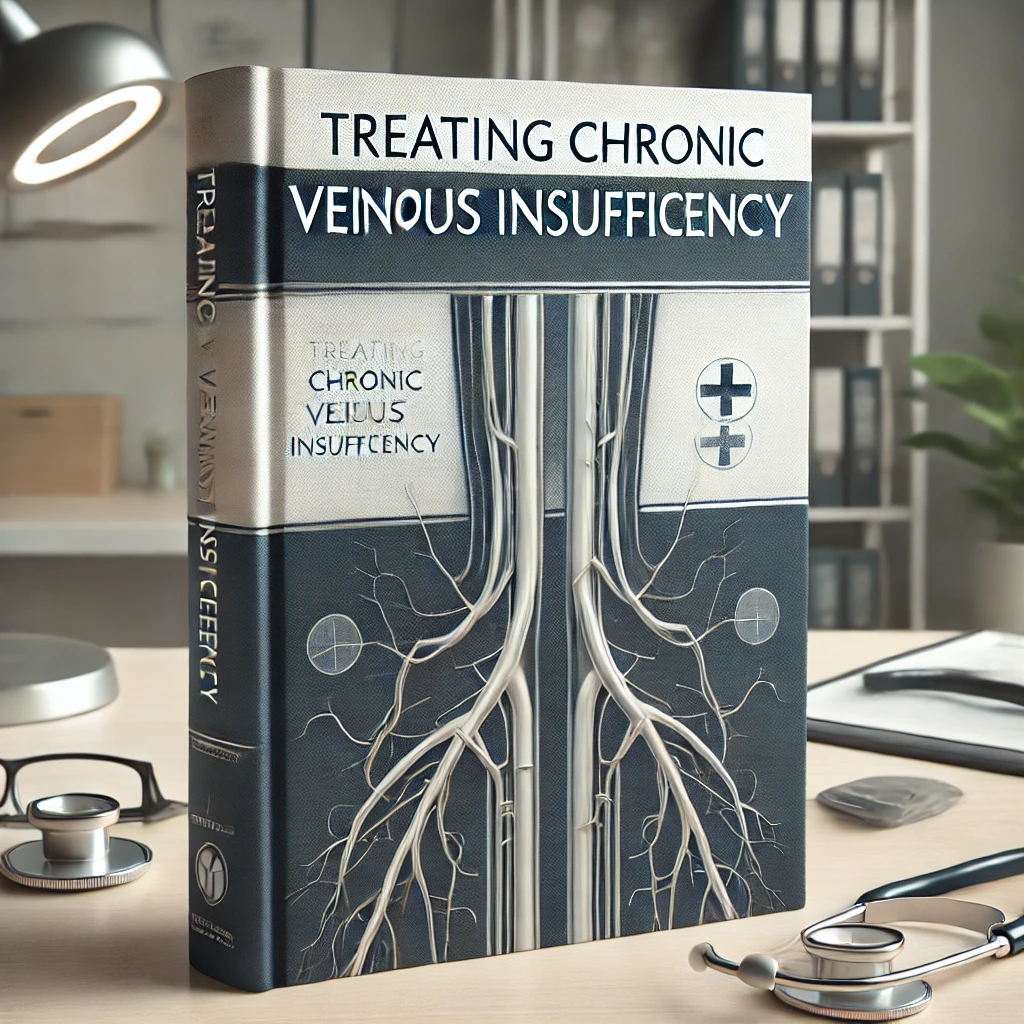Why Treating Chronic Venous Insufficiency Means Addressing All Refluxing Veins—Not Just the Saphenous Veins

🦵 Why Treating Chronic Venous Insufficiency Means Addressing All Refluxing Veins—Not Just the Saphenous Veins
When it comes to chronic venous insufficiency (CVI) and varicose veins, many patients (and even some providers) assume that closing off the great saphenous vein (GSV) or small saphenous vein (SSV) is enough to fix the problem.
But here’s the truth:
Treating the saphenous vein alone is often only part of the solution.
To get long-lasting relief and prevent recurrence, it’s critical to treat all refluxing veins—including accessory veins, perforators, and tributaries—not just the main trunks.
In this blog, we’ll explore:
- What chronic venous insufficiency really is
- Why saphenous vein treatment alone is incomplete
- The role of tributary and perforator veins in persistent symptoms
- How comprehensive vein mapping and a full treatment plan lead to better outcomes
💡 What Is Chronic Venous Insufficiency?
Chronic venous insufficiency is a condition in which the veins—especially in the legs—fail to return blood effectively back to the heart. This happens due to valve failure in the veins, which allows blood to flow backward (called venous reflux) and pool in the legs.
Symptoms include:
- Leg swelling
- Heaviness or aching
- Varicose veins
- Skin discoloration
- Venous eczema or ulcers in advanced stages
CVI is progressive, and if left untreated, it can lead to serious complications like skin breakdown and non-healing ulcers.
🧬 Understanding the Saphenous Veins
The great saphenous vein (GSV) and small saphenous vein (SSV) are the primary superficial veins often involved in venous reflux. These veins run along the inner thigh and calf and are frequently treated with:
- Endovenous laser ablation (EVLA)
- Venaseal (adhesive closure)
- Mechanochemical ablation (MOCA)
These treatments close off the damaged saphenous vein and reroute blood through healthier vessels.
But treating the saphenous vein alone may not resolve the entire venous problem.
⚠️ The Hidden Problem: Residual Reflux in Tributaries and Perforators
Patients often continue to have symptoms after GSV or SSV treatment due to reflux in other superficial or perforator veins that weren’t addressed.
Key veins that can contribute to ongoing symptoms:
- Accessory saphenous veins (AASV, PASV) – often run parallel to GSV
- Anterior or posterior tributaries – branch off saphenous trunk
- Perforator veins – connect superficial to deep venous systems
- Reticular veins and varicosities – visible clusters that are signs of deeper dysfunction
If these veins are also incompetent and left untreated, symptoms often persist or recur, and visible varicosities may not improve.
🔬 Why Treating All Refluxing Veins Matters
1. Prevent Recurrence of Symptoms
If only the main saphenous trunk is treated, but reflux continues in tributaries or perforators, the patient may experience:
- Persistent leg swelling or heaviness
- Incomplete resolution of varicose veins
- Ongoing skin changes or ulcers
- Frustration from lack of visible results
2. Improve Cosmetic Outcomes
Many varicose veins arise from branch or tributary reflux, not just the saphenous vein. Treating the saphenous trunk without addressing these tributaries leads to incomplete aesthetic results and recurrence of bulging veins.
3. Reduce Ulcer Risk
In advanced cases, refluxing perforator veins (especially in the lower leg or ankle) contribute to venous stasis ulcers. These must be treated directly—often with procedures like ultrasound-guided foam sclerotherapy or perforator ablation.
4. Improve Venous Hemodynamics
Treating all incompetent veins helps normalize pressure in the leg’s venous system, leading to:
- Better fluid return
- Less inflammation
- Improved tissue oxygenation and skin health
📊 The Role of Comprehensive Duplex Ultrasound
A detailed venous duplex ultrasound is essential before any treatment. It allows the provider to map:
- All superficial veins
- Deep vein competency
- Direction of blood flow
- Reflux duration (typically >0.5 seconds is abnormal)
- Connection points between superficial, deep, and perforator veins
This mapping ensures no refluxing segment is missed and helps guide a personalized, stepwise treatment plan.
🛠️ What a Comprehensive CVI Treatment Plan Should Include
1. Saphenous Vein Closure
Using EVLA, RFA, or Venaseal to close off the main refluxing trunk.
2. Treatment of Tributaries and Varicosities
Via ambulatory phlebectomy or ultrasound-guided foam sclerotherapy to eliminate visible or symptomatic branch veins.
3. Perforator Vein Ablation (When Indicated)
Especially if associated with skin changes, pain, or ulcers.
4. Post-Treatment Compression and Follow-Up Ultrasound
To support healing and verify vein closure.
🧠 Common Misconception: “If the big vein is closed, the problem is fixed.”
While closing the saphenous vein is a key first step, it’s not the whole story. Think of it like sealing a leaking pipe—but forgetting to patch the holes in all the connected branches. The system still fails.
That’s why treating all refluxing veins—not just the trunk—is the functional and complete approach to venous disease.
🩺 At Sheen Vein & Cosmetics, We Treat the Whole Venous System—Not Just Part of It
Our vein specialists are trained in advanced duplex imaging and comprehensive vein mapping. We customize each treatment plan to:
- Address all reflux sources
- Eliminate both symptoms and cosmetic concerns
- Prevent long-term recurrence
- Heal ulcers and restore tissue health in advanced cases
We offer:
✅ Endovenous laser and radiofrequency ablation
✅ Ultrasound-guided foam sclerotherapy
✅ Microphlebectomy for bulging veins
✅ Perforator vein ablation
✅ Functional medicine support for inflammation and circulation
🔁 Final Thoughts
Chronic venous insufficiency is a progressive condition. Treating just the saphenous vein may offer short-term relief, but lasting results require a comprehensive strategy.
Don’t settle for partial treatment.
If you’re still experiencing symptoms or visible veins after previous procedures, you may have untreated reflux in other parts of your venous system.
📞 Ready for Complete Vein Relief?
At Sheen Vein & Cosmetics, we take a full-system approach to chronic venous insufficiency.
📍Located conveniently to serve you with compassionate care and modern treatment options.
🦵 Call us today to schedule your vein consultation or
🌐 Visit our website to learn more about complete CVI treatment.